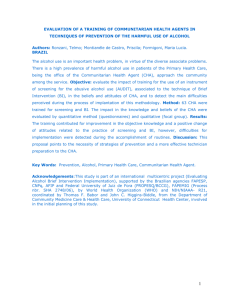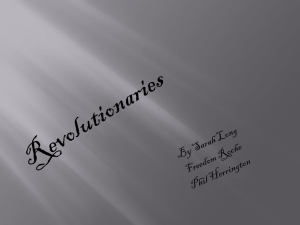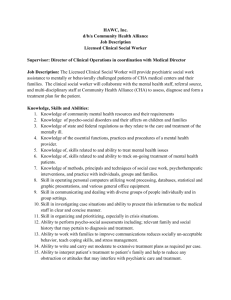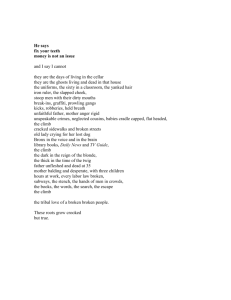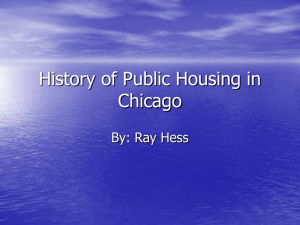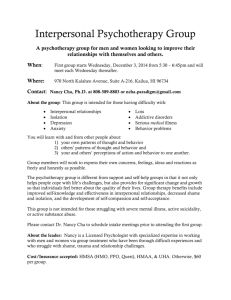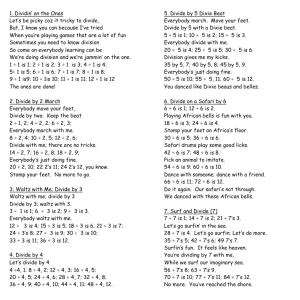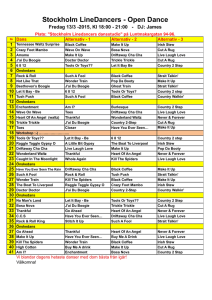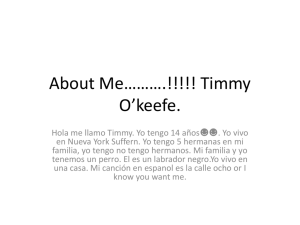BIBLIOGRAPHY FOR COMMUNITY HEALTH AIDES
advertisement
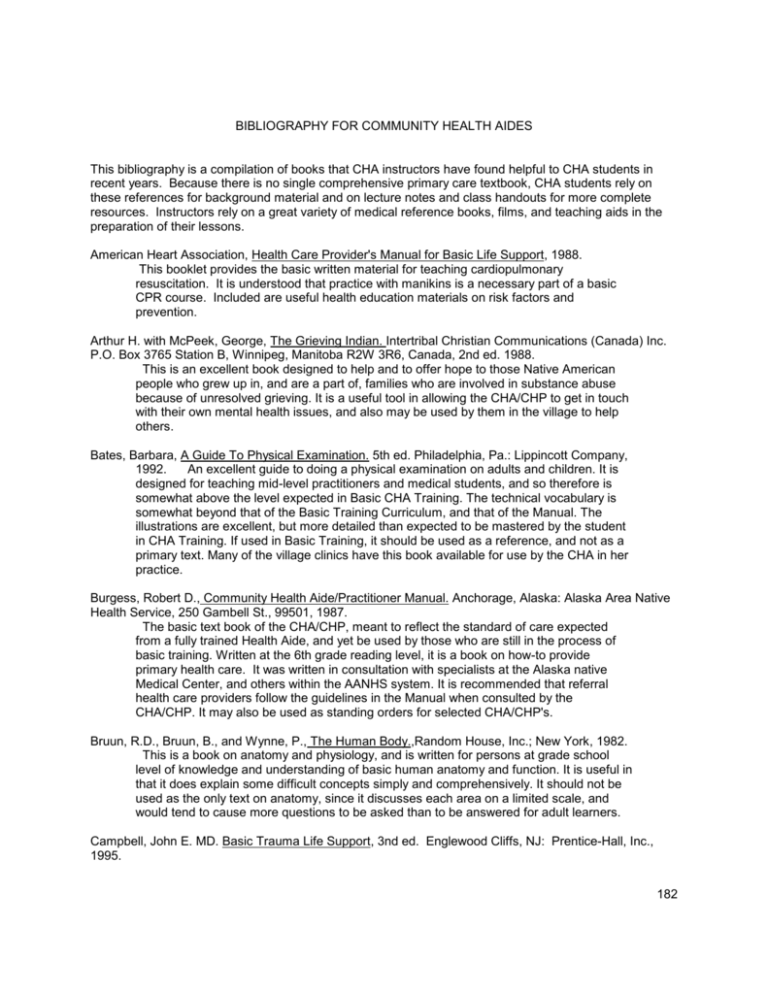
BIBLIOGRAPHY FOR COMMUNITY HEALTH AIDES This bibliography is a compilation of books that CHA instructors have found helpful to CHA students in recent years. Because there is no single comprehensive primary care textbook, CHA students rely on these references for background material and on lecture notes and class handouts for more complete resources. Instructors rely on a great variety of medical reference books, films, and teaching aids in the preparation of their lessons. American Heart Association, Health Care Provider's Manual for Basic Life Support, 1988. This booklet provides the basic written material for teaching cardiopulmonary resuscitation. It is understood that practice with manikins is a necessary part of a basic CPR course. Included are useful health education materials on risk factors and prevention. Arthur H. with McPeek, George, The Grieving Indian. Intertribal Christian Communications (Canada) Inc. P.O. Box 3765 Station B, Winnipeg, Manitoba R2W 3R6, Canada, 2nd ed. 1988. This is an excellent book designed to help and to offer hope to those Native American people who grew up in, and are a part of, families who are involved in substance abuse because of unresolved grieving. It is a useful tool in allowing the CHA/CHP to get in touch with their own mental health issues, and also may be used by them in the village to help others. Bates, Barbara, A Guide To Physical Examination. 5th ed. Philadelphia, Pa.: Lippincott Company, 1992. An excellent guide to doing a physical examination on adults and children. It is designed for teaching mid-level practitioners and medical students, and so therefore is somewhat above the level expected in Basic CHA Training. The technical vocabulary is somewhat beyond that of the Basic Training Curriculum, and that of the Manual. The illustrations are excellent, but more detailed than expected to be mastered by the student in CHA Training. If used in Basic Training, it should be used as a reference, and not as a primary text. Many of the village clinics have this book available for use by the CHA in her practice. Burgess, Robert D., Community Health Aide/Practitioner Manual. Anchorage, Alaska: Alaska Area Native Health Service, 250 Gambell St., 99501, 1987. The basic text book of the CHA/CHP, meant to reflect the standard of care expected from a fully trained Health Aide, and yet be used by those who are still in the process of basic training. Written at the 6th grade reading level, it is a book on how-to provide primary health care. It was written in consultation with specialists at the Alaska native Medical Center, and others within the AANHS system. It is recommended that referral health care providers follow the guidelines in the Manual when consulted by the CHA/CHP. It may also be used as standing orders for selected CHA/CHP's. Bruun, R.D., Bruun, B., and Wynne, P., The Human Body.,Random House, Inc.; New York, 1982. This is a book on anatomy and physiology, and is written for persons at grade school level of knowledge and understanding of basic human anatomy and function. It is useful in that it does explain some difficult concepts simply and comprehensively. It should not be used as the only text on anatomy, since it discusses each area on a limited scale, and would tend to cause more questions to be asked than to be answered for adult learners. Campbell, John E. MD. Basic Trauma Life Support, 3nd ed. Englewood Cliffs, NJ: Prentice-Hall, Inc., 1995. 182 Good reference text about pre-hospital trauma care. It is modeled after the Advanced Trauma Life Support course and designed to assist the EMT and other non-physicians to think and act along similar lines. It deals specifically with trauma. It is well written, explains concepts and defines medical terms clearly. Some of the material is beyond the scope of the CHA. However, the book is excellent for instructors to use in teaching emergency care and it is a valuable advanced text for CHAs who are EMTs and interested in expanding their knowledge. Clark, Susan. Emergency Trauma Training. 7th ed., Sitka, Alaska; Southeast Region Emergency Medical Services Council, 207 Moller Drive, Room 113, (99835); 1995. The objectives and content, in general, follows the guidelines of the U.S. Department of Transportation's "First Responder" 40 hour course. It's content is geared for rural Alaska. An instructor's guide is available which lists the learning objectives, the materials needed, and a suggested schedule of teaching the course over a five day period, as well as a student check list. Community Health Aide Program, The Village Medicine Reference. Anchorage, Alaska; Alaska Area Native Health Service, 250 Gambell St., 99501, 1996. This reference contains descriptions, uses, warnings, storage, and dispensing guidelines for the medications most commonly found in village health clinics. Both generic and trade names are used. This book is essential to the CHA in Basic Training, and was written specifically for CHA/CHP's who order drugs from the IHS pharmacy, or who follow patients that receive drugs from the IHS. It is especially pertinent to Alaska, and offers information on each drug should it get frozen. Diehl, H.S., Tsumura, T.K., Henke, L.J., and Bonekemper, T.W., Health and Safety For You. 5th ed., New York; McGraw-Hill Book Company, 1980. This is a good text for use as background reading material for basic anatomy and physiology, and, and is at an appropriate reading and comprehension level for CHA/CHP's in basic training. The illustrations are well-labeled, although they lack the anatomical detail necessary to be useful to the CHA in gaining a reasonable understanding of basic anatomy and physiology. Prevention and health promotion are emphasized, although disease and clinical subjects are not. Dox, I., Eisner,G.M., and Melloni,B.J., Melloni's Illustrated Medical Dictionary. Baltimore, Md., Williams and Wilkins Book Co.; current ed. This reference is useful in basic training, is extremely well-illustrated, is succinct and easy to read, although the print is a bit small. Grant, H.D., Murray, R.H.,Jr., Bergeron, J.D. Emergency Care. 7th ed.,Englewood Cliffs, New Jersey, 07632; Robert J. Brady, 1995. This is the basic text book used by Emergency Medical Technicians in their training which requires from 100 to 130 hours. It is intended as a review only, and is not to supplant the emergency care training recommended prior to CHA Basic training. It is written at approximately the tenth grade reading level, and is a well organized and useful adjunct to basic emergency skills review. Hafen, B. and Franksen, K., Psychological Emergencies and Crisis Intervention, Englewood, Colo.; Morton Publishing Co. 1985. This emergency care reference is an easy-to-read guide to dealing with mental health emergencies in the field. There is clear, supporting factual information describing each type of incident and practical techniques for handling the crisis and getting appropriate help. The table of contents reads like a litany of recurrent village problems: psychiatric 183 emergencies, suicide, death and dying, rape and sexual assault, child abuse, violence, and drug and alcohol emergencies. It adds information on the psychological elements of disaster, burnout, and coping with stress. Good, clear terminology without jargon. Useful for CHAs as companion reference to the Community Health Aide Manual for mental health problems. Memmler, R.L., and Wood, D.L., The Human Body in Health and Disease. 7th ed., Philadelphia, Pa.; J.B. Lippincott Company, 1991. This is an excellent text in anatomy and physiology, is well-illustrated, clearly written, and easily understood. It is also especially written for adult learners who are just entering the health provider field, so it is generally not overly detailed and does not talk down to the student. It is a useful reference. Thomas, C.L., Taber's Cyclopedic Medical Dictionary. 14th ed. Philadelphia, Pa.; F.A.Davis Company, 1977. This is an easy to read, well-formatted dictionary. It does not have many illustrations, but those it does have are clear. This reference is quite adequate for the basic CHA course. 184
